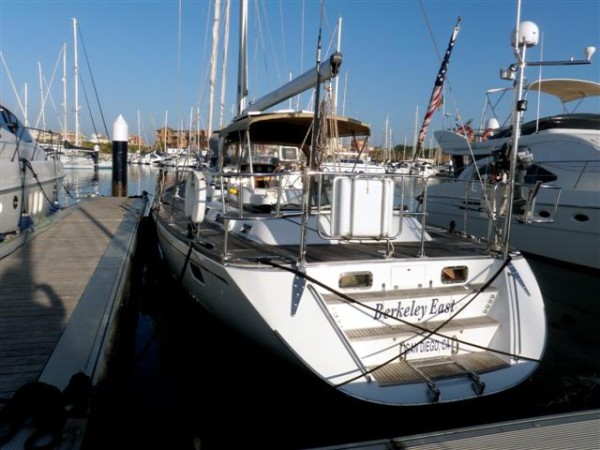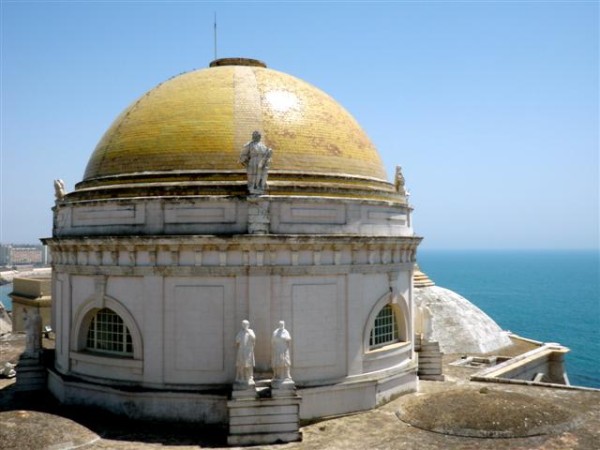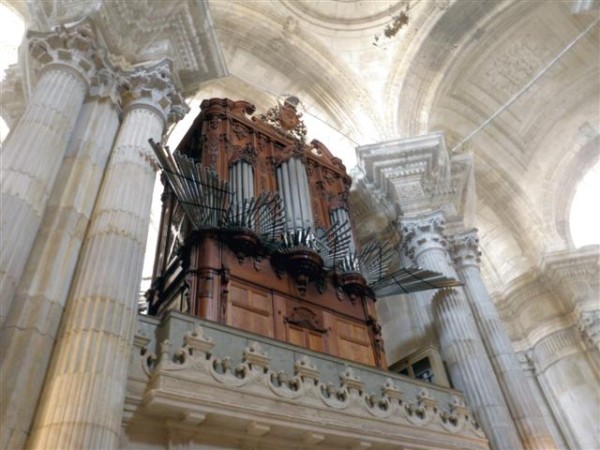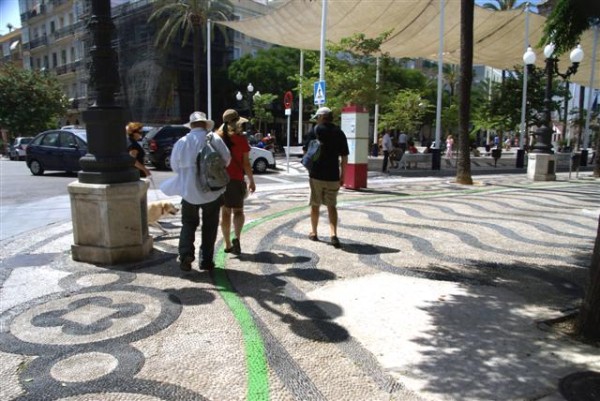It All Started with a Glass of Wine
Tuscany, Italy When we decided to sell Berkeley East and end our cruising life, we went to the beach and made a...

Upon returning to Berkeley East from our trip around Portugal, it was time to get moving, we had been in Portugal for almost a month. So we quickly had a passeralle (a gang plank for boarding when moored stern to the dock) fitted to Berkeley East and we headed off on an overnight passage to Cadiz, Spain.
Berkeley East was too large for the marina in Cadiz so we ended up across the bay in Puerto Sherry in El Puerto de Santa Maria. This is a very nice marina, but the surrounding buildings have never been finished, so it feels a little desolate. After cleaning up (the boat and us) we grabbed the train to Seville to do some land exploring. In less than two hours on a nice, air conditioned train, we arrived in Seville and began our search for the best tapas in the town. Friends, Al and Linda (fellow Caribbean 1500 cruisers) flew in from Canada to join us in Seville and on Berkeley East for the sail through the Strait of Gibraltar and along the Costa de Sol.

We spent two days touring Seville, seeing all the sights and trying tapas at every corner. Seville is a very charming, moderate size city, which was the base for Christopher Columbus’ expedition to the new world.
We attended a flamenco music and dance event and were surprised; it was not what we expected. Flamenco is a style which is native to only the Andalusia region of Spain. While there are many types, the one we saw had very heavy Moorish elements. We expected light and airy guitar and dancers with castanets and we saw music mostly done by hand with chanting and hard stomping dancing. Enjoyable, but a big surprise, we are learning something new every day here.

Seville, like most European cities has is cathedrals and palaces, which we enjoyed. Every one is unique and special.
img src=”images/churchcz_scale.jpg” class=”blogImg”>
We walked along the river and stumbled into the Plaza de Toros (Bull Ring). Seville is one of the few areas that still allow bull fights (they don’t kill the bull anymore).

After our brief time in Seville, we caught the train back to El Puerto de Santa Maria and took the ferry over to see the city of Cadiz.

Cadiz is on a narrow strip of land that stretches out into the bay and is almost an island. It has many well preserved historical sites and great plazas. The historical diversity of Cadiz can be seen in the architectural style of its buildings ranging from Baroque, Neoclassical, Isabelline Gothic to Moorish-revival.




To help tourists find there way around the town, they have painted colored lines on the pavement. It works surprisingly well, we rarely got lost as we wound our way through the narrow streets to see the sights.
